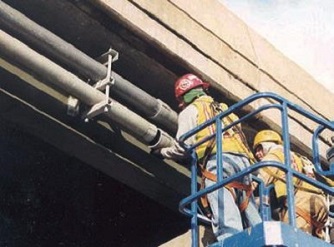Why Fiberglass Conduit is a Better Choice?
 How Does Fiberglass Conduit Compare to Traditional Options?
How Does Fiberglass Conduit Compare to Traditional Options?
Fiberglass Conduit is both solid and durable while remaining relatively lightweight. Fiberglass conduit can be used below ground, concrete encased, above ground, under bridges and high impact-hazardous locations. It is used regularly by power and communications contractors on commercial and industrial projects as an economical and long lasting alternative to PVC or other rigid electrical conduit like PVC-coated steel or thin wall EMT conduit. Here’s a quick look at the basics of fiberglass conduits.
How is a Fiberglass Conduit Made?
Fiberglass comes in many forms, and each type has a specific use. For example, a sports car’s body kit will consist primarily of fiberglass, but it’s not the same material used in industrial settings. Instead, this type of industrial fiberglass is cured the high temperature, and it’s more malleable. Conduits and fittings are manufactured with continuous E or E-CR glass roving encapsulated in an internally steam cured, corrosion resistant epoxy resin system with UV inhibiting carbon black pigment.
Advantages of Fiberglass Conduit
1. EASY TO INSTALL:
It is easier to work with fiberglass conduit because it is lighter weight to carry, plus it is easy to cut and join in the field. There is no threading or masking of joints required. Push-fit spigot and bell design facilitates easy assembly saving hours of labor. A good way to increase productivity, reduced injuries and worker fatigue. Fiberglass conduit can also be joined through the application of epoxy adhesive.
2. LIGHTER WEIGHT REDUCES COSTS IN MANY WAYS:
Fiberglass conduit weighs considerably less than PVC or steel, resulting in cost savings through reduction in the following costs: handling and assembly time, requirements for mechanical handling, freight charges, and costs of support.
3. EXTENDED SUPPORT SPANS:
Some brands are UL Listed for extended support spans. The UL listing allows for longer conduit support spans (than outlined in the NEC) thereby reducing overall installation costs by reducing the number of required supports for listed products. These support spans are comparable to GRC and PVC-coated conduit systems. Exceeds spans required for PVC conduit. (ie: 4” Fiberglass Conduit = up to 15 ft.)
4. LOWER COEFFICIENT OF FRICTION:
The smooth inner wall results in low coefficient of friction of fiberglass compared to steel conduit, and considerably lower than that of PVC. This means that electrical cables are easier to pull through, resulting in labor savings and less stress on the cables. Cables can be pulled further resulting in reduced number of manholes.
5. WIDE TEMPERATURE RANGE:
Fiberglass conduit can withstand a wide array of temperatures ranging from -40°F to 230°F (-40°C to 110°C). Unlike
PVC which is extremely brittle in cold temperature (+40°F) and malleable in heat.
6. FEWER EXPANSION JOINTS:
Fiberglass conduit has a lower coefficient of thermal expansion.
7. NO BURN-THROUGH:
Fiberglass bends and elbows have a strong resistance to being cavitated or pierced as a result of rope pull, unlike rigid PVC.
8. NO CABLE FUSION:
Steel conduit will weld with cable, and PVC conduit may fuse or melt under electrical fault conditions.
9. FLEXIBLE:
The flexibility of fiberglass conduit allows it to conform to mildly uneven surfaces. Fiberglass conduit has survived the stresses of earthquakes better than PVC or steel.
10. IMPACT RESISTANT:
Superior impact and crush resistance and ability to retain its shape after impact or compression
11. LONGER LIFE SPAN:
Fiberglass is not affected by the effects of water (non-corrosive). Rodent and rot proof.
12. NON-TOXIC:
Unlike PVC, fiberglass is low halogen and does not release bromine or chlorine.
OTHER BENEFITS:
Non-conductive, assuring a safe system
Highest strength to weight ratio of any conduit
Fire resistant
Field bendable with hot box
Watertight up to 50 psi
UV stable material weathers well
Superior heat dissipation: allowing for higher ampacity cables
What Kind of Projects Use Fiberglass Conduit?
Those are the basics, but what are a few real-world examples? It is often used in wastewater treatment plants, transportation projects, mining, utilities, petrochemical plants, ports, piers, airports, tunnels & data centers. Especially good applications include: a confined space that requires a Class 1 rating or chemical plant, where off-gassing is a concern. Similarly, utility companies use fiberglass conduits to lower the fire risk or overhead application where weight is a consideration. The general takeaway is that fiberglass is the better choice for many projects.
Author: Tammie Cook, owner of 1 Industrial Source. With over 35 years experience in the electrical products industry.



 How Does Fiberglass Conduit Compare to Traditional Options?
How Does Fiberglass Conduit Compare to Traditional Options?